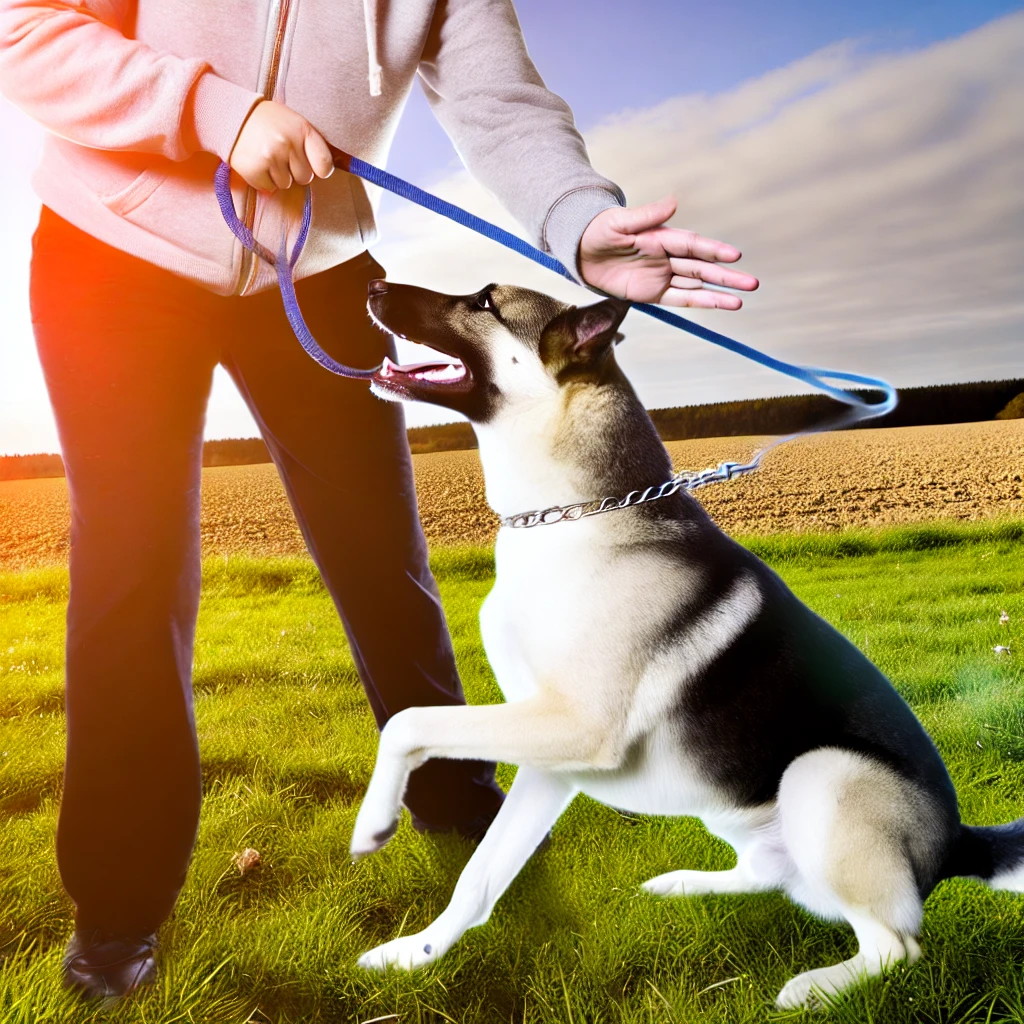
Negative reinforcement examples are often misunderstood in the context of dog training, but when used correctly, they can be a valuable tool for shaping a dog’s behavior.
In this guide, we’ll break down what negative reinforcement means in dog training, provide real-life examples, and help you understand how it differs from other methods like positive reinforcement and punishment.
By the end, you’ll have a clearer understanding of whether negative reinforcement is something you should consider in your training approach.
Dog training is essential for creating a well-mannered pet, and there are many approaches to it.
Some dog owners lean toward positive reinforcement, while others may find negative reinforcement examples useful in specific scenarios.
Let’s dive into what negative reinforcement is, how it works, and how you can use it to effectively train your dog.
What Is Negative Reinforcement in Dog Training?
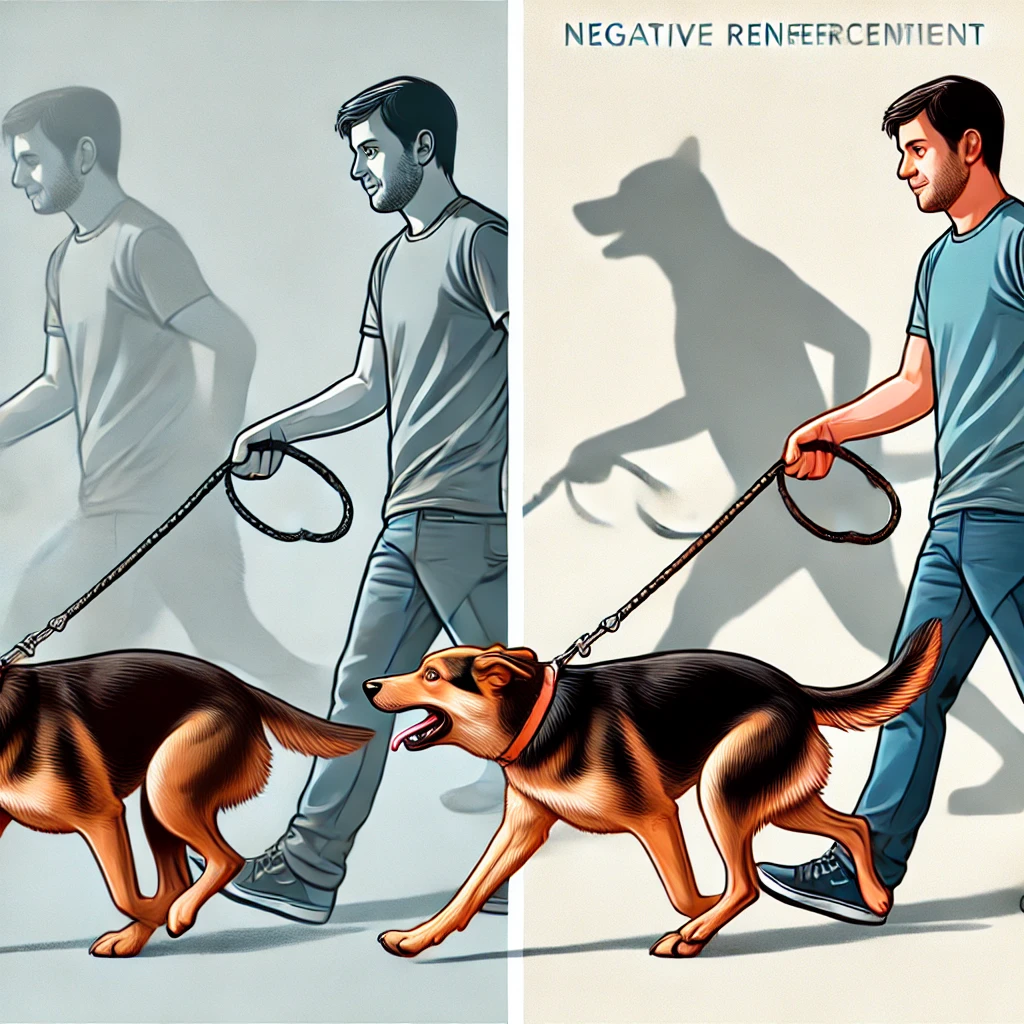
Before diving into negative reinforcement examples, it’s essential to understand what negative reinforcement actually means.
Contrary to popular belief, negative reinforcement is not about punishment.
It’s about removing something unpleasant to encourage a desired behavior.
In dog training, negative reinforcement occurs when an unpleasant stimulus is removed after the dog performs a desired behavior.
This reinforces the behavior, making it more likely that the dog will repeat the behavior in the future to avoid the unpleasant stimulus.
How Does Negative Reinforcement Work?
Negative reinforcement is all about timing.
When your dog behaves in a way that helps them escape or avoid something unpleasant, they quickly learn that their behavior has positive outcomes for them, even though it’s called “negative” reinforcement.
For example, imagine a dog that dislikes walking on a leash.
If the leash causes discomfort when the dog pulls, but the discomfort goes away when the dog stops pulling and walks properly, the dog will learn to walk without pulling to avoid the discomfort.
Now that we understand the basic concept, let’s explore some specific negative reinforcement examples to see how it’s applied in dog training.
Negative Reinforcement Examples in Dog Training
1. Leash Pressure and Loose Leash Walking
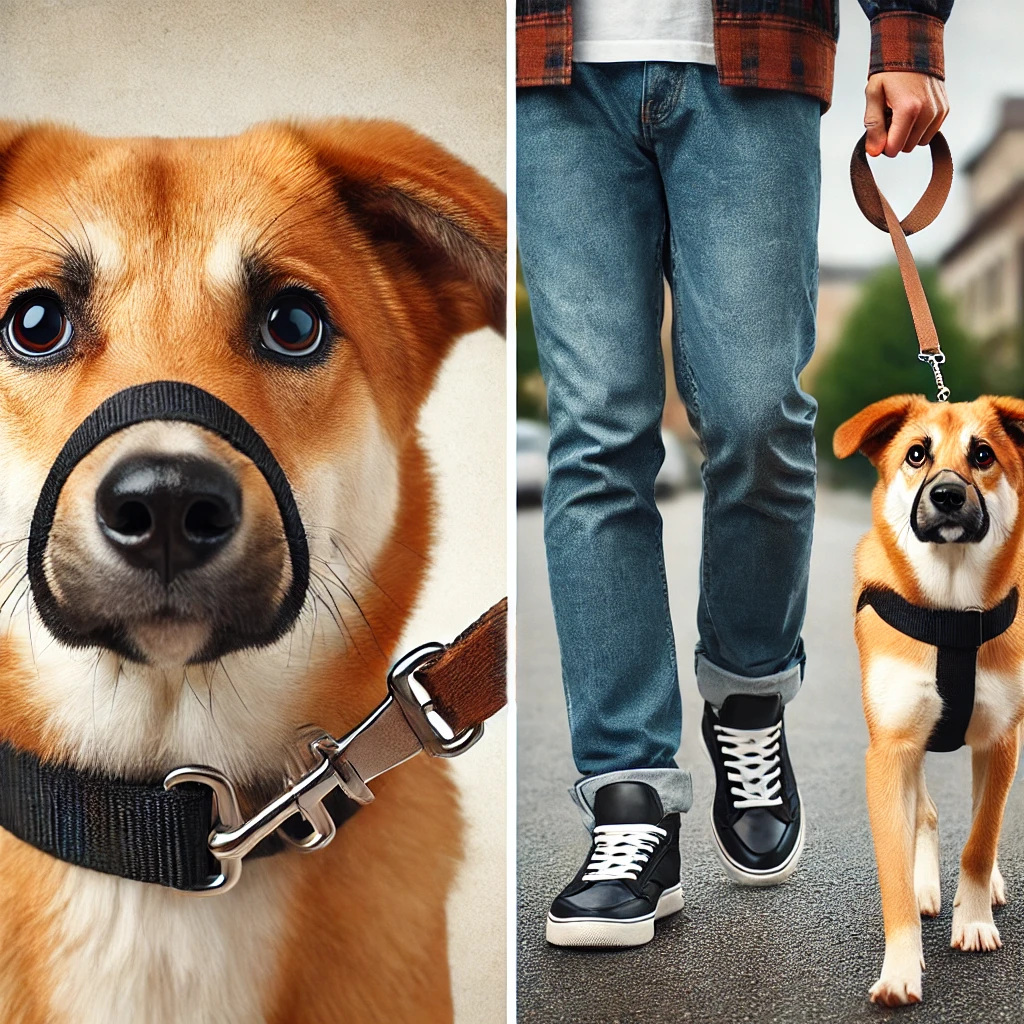
One of the most common negative reinforcement examples in dog training is the use of leash pressure to teach loose leash walking.
Many dogs naturally pull on the leash, which can make walks unpleasant for both the dog and the owner.
In this case, negative reinforcement can help.
- How it works: When the dog pulls, the owner applies gentle pressure by holding the leash firmly. This creates an unpleasant sensation for the dog. As soon as the dog stops pulling and starts walking calmly, the leash pressure is released, removing the discomfort.
- What the dog learns: The dog quickly understands that pulling on the leash causes discomfort, while walking calmly makes the pressure go away. Over time, the dog learns to walk without pulling to avoid the unpleasant sensation of leash pressure.
This example highlights the core idea behind negative reinforcement: removing an unpleasant stimulus to reinforce desired behavior.
2. Collar Pressure in Basic Obedience Training
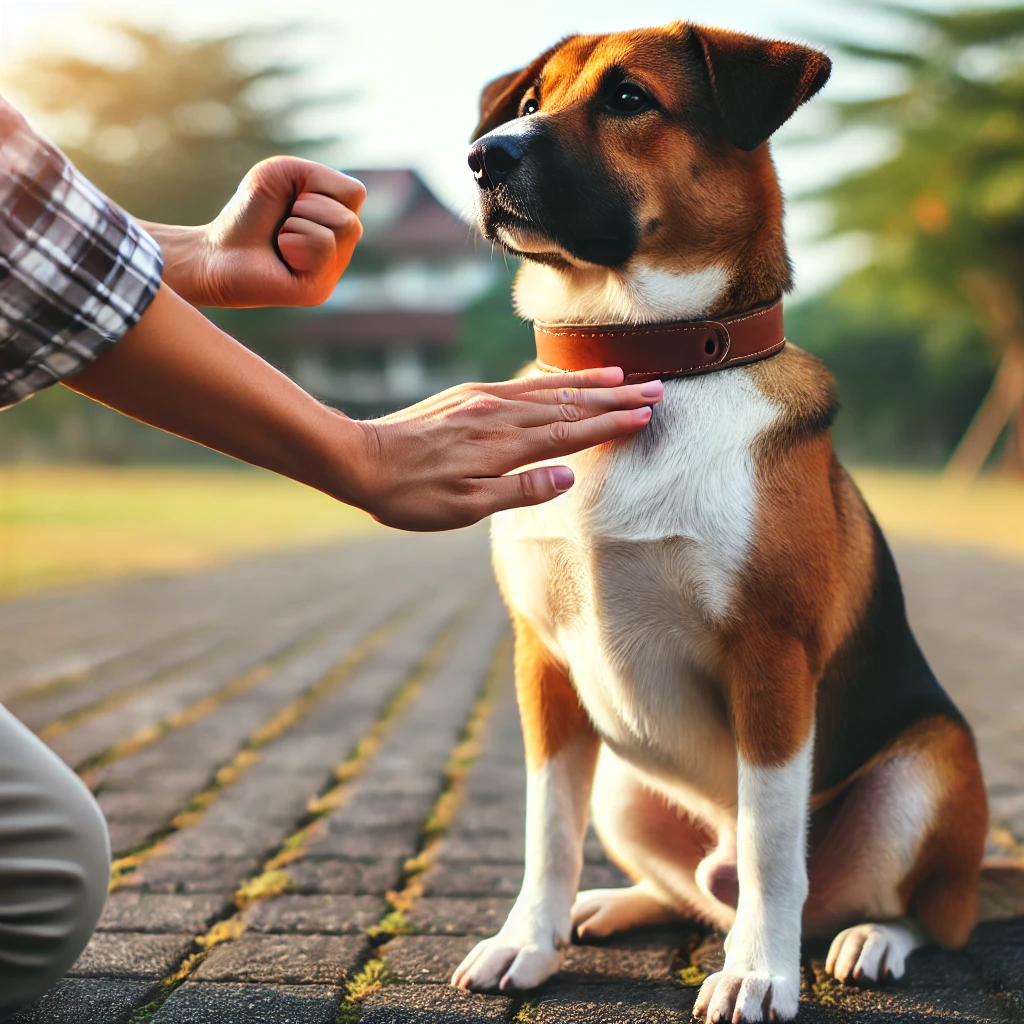
Another negative reinforcement example involves the use of collar pressure during basic obedience training, such as teaching the “sit” or “down” command.
- How it works: When training a dog to sit or lie down, the trainer may apply slight pressure on the dog’s collar (or gently push on the dog’s back). Once the dog performs the desired behavior (sitting or lying down), the pressure is immediately released.
- What the dog learns: The dog learns that sitting or lying down causes the pressure to go away, which reinforces the behavior. As a result, the dog becomes more likely to sit or lie down on command in the future to avoid the uncomfortable pressure.
This method can be effective when combined with positive reinforcement, such as treats or praise, to encourage the dog further.
3. Escaping from Water or Bath Time

Many dogs dislike getting wet or taking baths, which makes this another useful negative reinforcement example.
- How it works: If a dog is uncomfortable in the water, the trainer can use negative reinforcement by applying gentle pressure during bath time. The dog might try to avoid the water by squirming or attempting to escape. As soon as the dog stands still and calms down, the trainer stops the water flow or loosens their grip.
- What the dog learns: Over time, the dog realizes that calm behavior results in the removal of the unpleasant water or pressure. The dog will learn to stay calm during bath time to avoid the negative sensation of water or restraint.
Negative reinforcement in this case helps teach the dog to tolerate situations that it finds uncomfortable by rewarding calm behavior with the removal of the discomfort.
4. Using a Harness to Train Walking Behavior

Harness training is another excellent negative reinforcement example.
Some dogs may not enjoy the sensation of wearing a harness, especially if it feels restrictive.
This discomfort can be used as part of negative reinforcement training.
- How it works: When a dog pulls or misbehaves while wearing a harness, the pressure from the harness increases slightly. As soon as the dog walks calmly or follows the owner’s commands, the harness pressure is reduced or removed altogether.
- What the dog learns: The dog will associate calm walking and proper behavior with the removal of harness pressure, leading to more controlled behavior during walks.
This method helps to reinforce good walking habits by making the dog’s behavior directly affect its comfort level.
How Negative Reinforcement Differs from Positive Reinforcement and Punishment
To fully understand negative reinforcement examples, it’s helpful to compare it with other common training methods, such as positive reinforcement and punishment.
Each of these techniques has its place in dog training, but they work in very different ways.
Negative Reinforcement vs. Positive Reinforcement

- Negative Reinforcement: This method removes something unpleasant to increase a desired behavior. For example, removing leash pressure when a dog walks calmly.
- Positive Reinforcement: In contrast, positive reinforcement involves adding something pleasant to increase the likelihood of a behavior. For example, giving the dog a treat when it sits on command.
In short, negative reinforcement encourages behavior by removing discomfort, while positive reinforcement encourages behavior by adding rewards.
Negative Reinforcement vs. Punishment
- Negative Reinforcement: Removes something unpleasant when the desired behavior occurs, encouraging the dog to perform the behavior.
- Punishment: Adds an unpleasant consequence when an undesirable behavior occurs, discouraging the dog from repeating that behavior.
While punishment might stop unwanted behaviors, negative reinforcement is more about teaching the dog how to behave correctly to avoid discomfort.
When to Use Negative Reinforcement in Dog Training
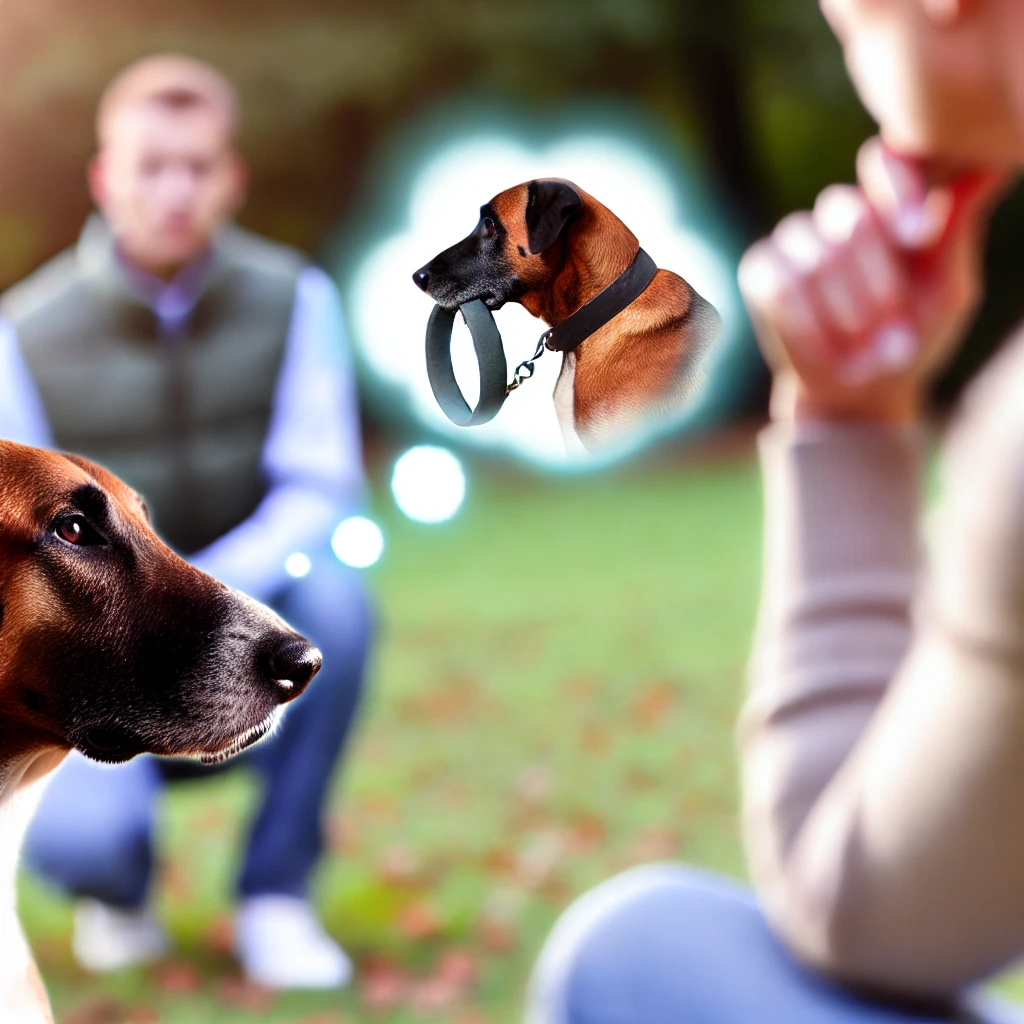
When to Use Negative Reinforcement in Dog Training
Negative reinforcement, when applied correctly, can be an effective tool in dog training.
However, it is essential to know when to use this technique to encourage good behavior and avoid reinforcing undesirable habits.
Negative reinforcement should be employed thoughtfully, and it is most useful in specific situations where the goal is to teach the dog how to avoid an unpleasant sensation or stimulus by performing a desired action.
Here are the situations where using negative reinforcement in dog training can be particularly effective.
1. Teaching Leash Manners
One of the most common applications of negative reinforcement in dog training is when teaching a dog to walk properly on a leash, also known as “loose leash walking.”
Dogs, especially those with a lot of energy, tend to pull on the leash, making walks uncomfortable for both the dog and the owner.
In this context, negative reinforcement helps the dog learn how to avoid the discomfort of leash tension by walking calmly beside the owner.
- How it works: When the dog pulls on the leash, the owner applies gentle pressure by holding the leash tightly. This creates an uncomfortable sensation for the dog. The moment the dog stops pulling and walks beside the owner without tension, the pressure is released. This removal of discomfort reinforces the dog’s behavior of walking without pulling.
- Why it works: Over time, the dog learns that walking calmly results in the removal of leash pressure, making the overall walk more comfortable. The dog is motivated to avoid the unpleasant sensation of pulling, leading to more controlled and relaxed walking behavior.
- Combination with Positive Reinforcement: For best results, negative reinforcement can be paired with positive reinforcement. For example, when the dog walks beside you without pulling, you can not only release the leash tension but also offer a treat or praise. This combination strengthens the desired behavior even more, ensuring a well-trained dog.
2. Basic Obedience Training
Negative reinforcement is also commonly used in basic obedience training, particularly when teaching commands like “sit,” “down,” or “stay.”
In these cases, slight physical pressure or an unpleasant stimulus can be applied to encourage the dog to perform a specific action, such as sitting or lying down.
- How it works: When teaching the “sit” command, for instance, you might apply light pressure to the dog’s back or collar. Once the dog sits, the pressure is immediately released. Similarly, in the “down” command, applying gentle pressure on the dog’s back or shoulders can help guide them into the lying down position, with the pressure being removed as soon as they comply.
- Why it works: The removal of the pressure reinforces the desired behavior, as the dog learns that by sitting or lying down, they can make the discomfort go away. This encourages the dog to respond more quickly to these basic commands, making obedience training smoother and more efficient.
- Combining with Treats and Praise: Like with leash training, combining negative reinforcement with positive reinforcement can amplify results. After the dog sits or lies down in response to the removal of pressure, offering a treat or verbal praise helps solidify the behavior, making it more likely the dog will respond to the command in the future.
3. Overcoming Fear or Anxiety
In certain situations, negative reinforcement can help dogs overcome fear or anxiety by teaching them to remain calm in uncomfortable situations.
For example, if a dog is fearful of a particular stimulus—such as a vacuum cleaner, thunderstorm, or loud noise—negative reinforcement can be used to teach the dog that calm behavior leads to the removal of the unpleasant experience.
- How it works: In situations where a dog is anxious or fearful, gentle negative reinforcement can encourage the dog to remain calm. For instance, if a dog is scared of getting into the car, the trainer might apply slight pressure, such as a nudge or leash tension, as the dog hesitates near the car. When the dog moves toward the car or steps inside, the pressure is released. This reinforces the idea that approaching or interacting with the feared object makes the discomfort go away.
- Why it works: The dog learns that they can control the situation by exhibiting calm behavior. This can help reduce their anxiety over time, as they associate the removal of pressure or discomfort with staying calm in the presence of the feared object or situation.
- Caution: It’s important to use negative reinforcement carefully in cases of anxiety or fear, as using too much pressure or stress can worsen the dog’s reaction. Always pair negative reinforcement with patience and positive reinforcement, rewarding the dog for calm, cooperative behavior to build their confidence.
4. Training to Avoid Undesirable Behavior
Negative reinforcement can also be used to teach a dog to avoid behaviors that are unwanted, such as jumping up on furniture, digging in the yard, or chewing on household items.
The goal in these scenarios is to apply an unpleasant stimulus when the dog engages in the undesired behavior and remove it as soon as the dog stops the behavior.
- How it works: For example, if a dog continually jumps up on the couch, the owner might apply gentle pressure to the dog’s collar or use a verbal cue (such as a firm “no”). When the dog gets off the couch, the pressure or cue is immediately stopped. This removal of discomfort teaches the dog that staying off the furniture is more comfortable than jumping on it.
- Why it works: The dog associates the removal of the unpleasant stimulus with the cessation of the unwanted behavior. Over time, the dog learns to avoid the behavior that causes the unpleasant experience, such as jumping up on furniture, because they know it will result in pressure or discomfort.
- Alternative Methods: While negative reinforcement can be effective for stopping unwanted behaviors, it is important to ensure that it is done in a humane and gentle way. Positive reinforcement should also be used to encourage the dog to engage in more desirable behaviors, such as staying on the floor or using a designated dog bed.
5. Training with a Harness or Head Collar
For dogs that are not used to wearing harnesses or head collars, negative reinforcement can be helpful in teaching them to get accustomed to the equipment.
Many dogs find harnesses or head collars uncomfortable at first, but negative reinforcement can teach them to behave calmly while wearing the equipment.
- How it works: When a dog pulls or resists while wearing a harness or head collar, the pressure from the equipment increases. Once the dog relaxes or stops resisting, the pressure is reduced or removed entirely. This encourages the dog to associate calm, cooperative behavior with comfort.
- Why it works: The dog quickly learns that pulling or struggling makes the equipment more uncomfortable, while calm behavior makes the discomfort go away. This helps the dog become more comfortable with wearing the harness or head collar and behave more appropriately while wearing it.
- Combining with Positive Reinforcement: Again, it is crucial to pair negative reinforcement with positive reinforcement, such as offering treats or praise when the dog behaves well while wearing the harness or head collar. This combination helps the dog learn to enjoy the equipment and respond positively to it.
Balancing Negative Reinforcement with Positive Reinforcement
While negative reinforcement can be effective in certain scenarios, it’s important to balance this technique with positive reinforcement to ensure a humane and stress-free training experience for your dog.
Positive reinforcement—rewarding desired behaviors with treats, praise, or toys—helps strengthen the behaviors you want to see more often, while negative reinforcement can help eliminate undesirable behaviors by removing discomfort.
Using both methods together creates a well-rounded training program, where the dog learns not only to avoid unpleasant experiences but also to enjoy performing the correct behaviors.
Additionally, balancing these methods ensures that your dog is more likely to develop trust, confidence, and a positive attitude toward training.
When using negative reinforcement, always prioritize your dog’s emotional and physical well-being, and consult a professional dog trainer if you’re unsure about how to apply these techniques effectively.
When Not to Use Negative Reinforcement:
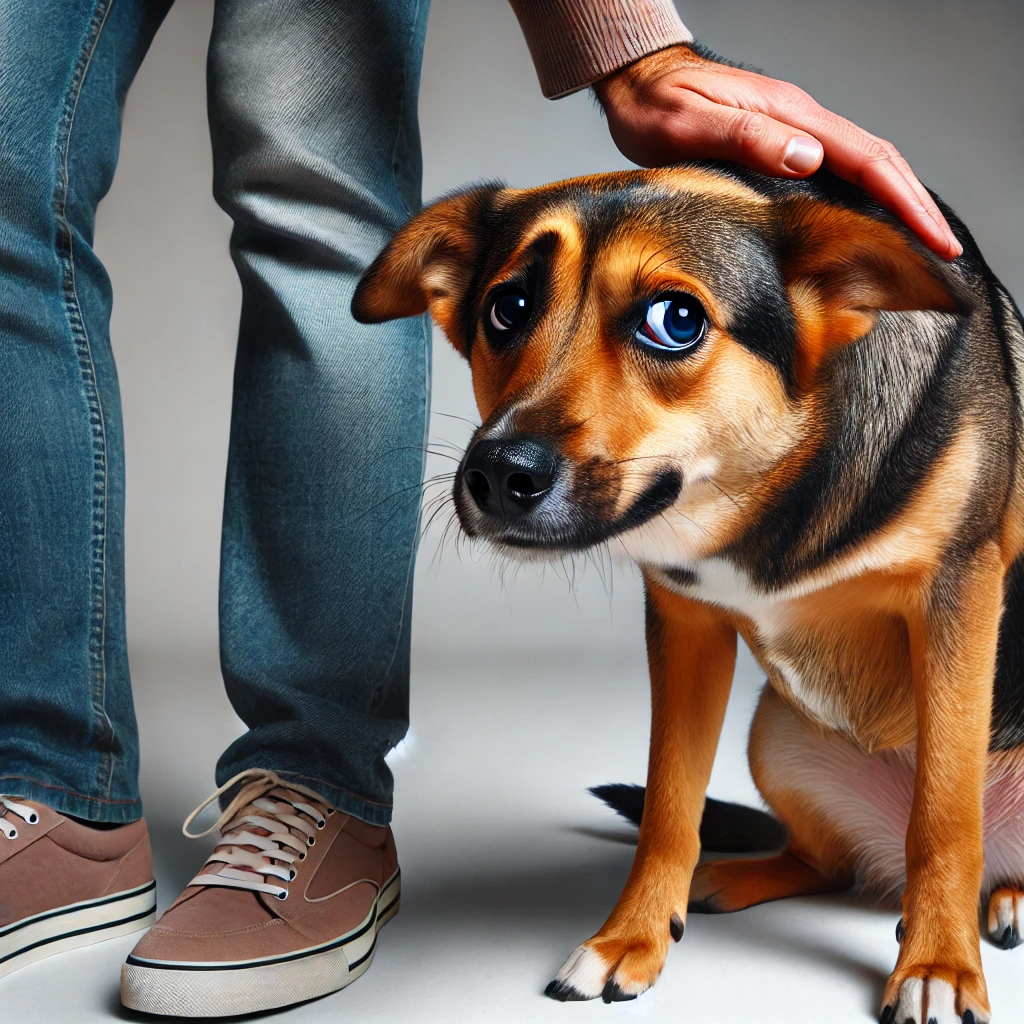
While negative reinforcement can be an effective tool in certain training scenarios, there are times when it is not appropriate and can even be harmful.
Using negative reinforcement in the wrong context can exacerbate existing issues, cause confusion, and lead to undesirable outcomes.
Knowing when not to use this technique is crucial for ensuring a humane and effective training experience for your dog.
1. Aggressive Behavior
One of the key situations where negative reinforcement should be avoided is when dealing with aggressive behavior.
Dogs may exhibit aggression for a variety of reasons, including fear, territorial instincts, or frustration.
Using negative reinforcement to address aggressive behavior can have unintended and dangerous consequences.
- Why it doesn’t work: Negative reinforcement, when applied to aggression, may increase the dog’s stress levels. For example, if you apply leash pressure or another unpleasant stimulus while the dog is exhibiting aggressive behavior, the dog may associate the discomfort with the trigger (such as another dog or person) rather than with its own behavior. This can lead to heightened aggression as the dog perceives the situation as more threatening.
- Alternative approach: Positive reinforcement and desensitization are generally more effective when dealing with aggression. These methods aim to change the dog’s emotional response to the trigger by gradually exposing them to it in a controlled way and rewarding calm behavior. For aggressive dogs, working with a professional trainer or behaviorist is highly recommended, as they can develop a tailored plan for safely addressing the behavior.
2. Anxiety and Fear
Negative reinforcement should also be avoided in cases where a dog is anxious or fearful.
Dogs that suffer from anxiety or phobias are often already in a heightened state of stress.
Adding a negative stimulus or discomfort can worsen their anxiety and make it even harder to address the underlying issues.
- Why it doesn’t work: When a dog is experiencing fear or anxiety, introducing negative reinforcement can make the dog associate the discomfort with the fearful situation. This association may reinforce the dog’s fear rather than helping them overcome it. For instance, if a dog is afraid of loud noises and is subjected to an unpleasant sensation during a thunderstorm, the dog may become more fearful of both the noise and the unpleasant stimulus, leading to more intense reactions in the future.
- Alternative approach: In cases of fear or anxiety, positive reinforcement and counter-conditioning techniques are far more effective. These methods work by rewarding the dog for calm, relaxed behavior in the presence of the trigger, gradually building the dog’s confidence. For example, if a dog is scared of thunder, you could reward them with treats and praise during the storm when they remain calm, helping them form a positive association with the previously frightening experience.
3. Complex Behaviors
Negative reinforcement is also not well-suited for teaching complex behaviors that require multiple steps or subtleties in training.
For example, teaching a dog to fetch or perform tricks that involve several actions might not be effective with negative reinforcement alone.
This is because negative reinforcement typically addresses a singular, immediate behavior (such as stopping pulling on a leash) rather than multi-step actions.
- Why it doesn’t work: Negative reinforcement tends to be effective in scenarios where a clear, direct behavior needs to be encouraged, such as walking without pulling on the leash. However, when training complex behaviors, positive reinforcement offers better long-term results because it allows you to reward each step of the process, encouraging the dog to think and engage in problem-solving.
- Alternative approach: Positive reinforcement is highly effective for teaching dogs complex behaviors because it encourages the dog to explore and understand the multiple components of a task. Breaking down the behavior into smaller, more manageable steps and rewarding the dog for completing each part helps them learn the entire process in a positive, stress-free manner.
4. House Training
Using negative reinforcement for house training is another area where it can do more harm than good.
For example, scolding a dog or applying pressure when they have an accident inside the house might lead to confusion and fear.
The dog may not understand that the punishment or discomfort is linked to their behavior and instead associate it with the presence of the owner, leading to anxiety around house training situations.
- Why it doesn’t work: Dogs often have difficulty connecting the act of relieving themselves indoors with the discomfort of negative reinforcement. As a result, they may become more anxious about going to the bathroom in general, rather than learning to associate the behavior with a specific location.
- Alternative approach: Positive reinforcement works best for house training. When the dog successfully relieves itself outside, reward them immediately with praise, treats, or play. This helps them understand that going outside is the desired behavior and encourages them to repeat it in the future. Consistency and positive feedback are key to successful house training.
The Right Balance for Effective Training
Negative reinforcement can be a useful tool in specific situations, but it must be applied thoughtfully and humanely.
Knowing when not to use negative reinforcement is just as important as knowing when it’s appropriate.
When dealing with aggressive behavior, anxiety, or complex tasks, alternative methods such as positive reinforcement, desensitization, and counter-conditioning are often more effective and less stressful for your dog.
By combining the right techniques and tailoring your training approach to suit your dog’s individual needs, you can ensure a balanced and effective training experience.
Always prioritize your dog’s emotional well-being, and when in doubt, consult a professional trainer or behaviorist to guide you through the process.
Conclusion: Combining Methods for Best Results

In dog training, no single approach fits all dogs.
While negative reinforcement examples show how this technique can be effective in specific situations, it’s essential to combine it with positive reinforcement for the best long-term results.
Ultimately, dog training is about helping your dog understand what behaviors are desired and rewarding them for making good choices.
By using a combination of negative and positive reinforcement, you’ll create a balanced and humane training environment where your dog can thrive.
Related Articles:
How to Trim Dog Nails Without Hurting Your Pet: Best Tools and Techniques
What Colors Can Dogs See? Understanding Your Pet’s Visual World

